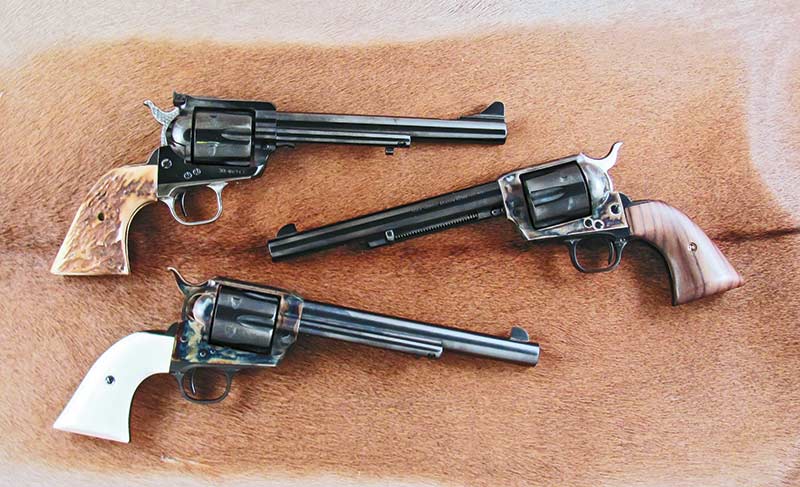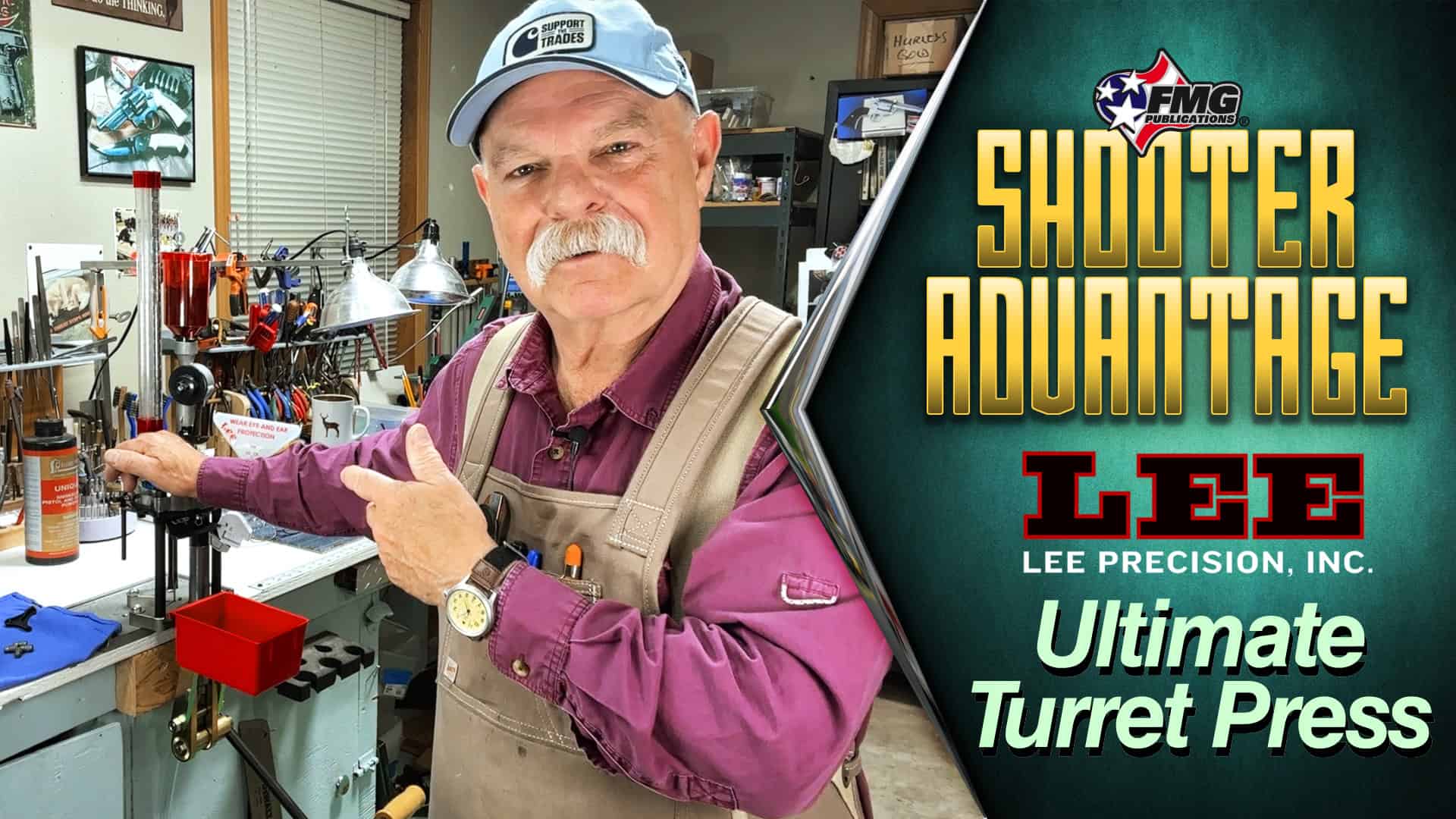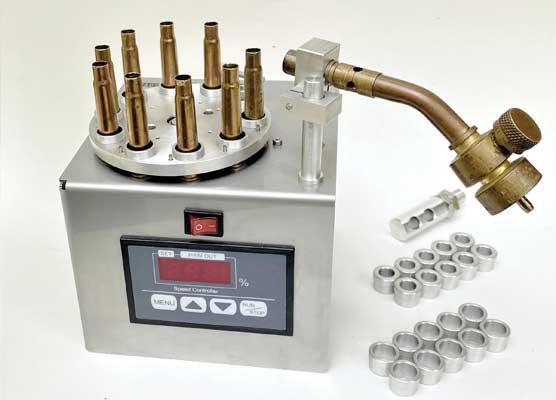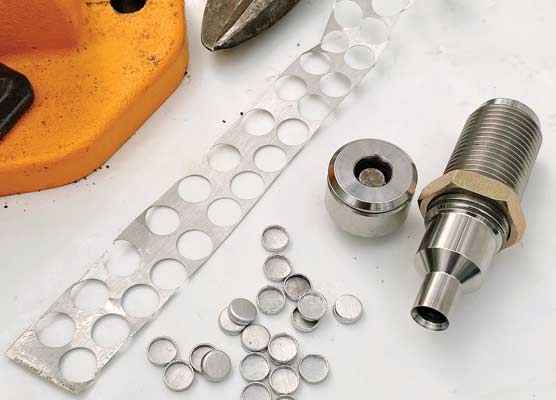Reloading the .38-40
The O.G. .40 Cal.
There is nothing really new about necking cartridge cases down to accept smaller bullets and thus increase muzzle velocity. Winchester’s first center-fire cartridge, the .44 WCF or .44-40 of 1873, was soon necked down to take a .40 caliber bullet over the same 40 grains of black powder. This new bullet weighed 180 grains instead of the 200- to 205-grain weight of the parent .44-40. For some reason, this new cartridge instead of being called the .40 WCF became the .38 WCF. Perhaps they did not want it to be known as the .40-40 so .38-40 it was and is.
Just as with the .44 WCF, Colt looked at chambering their Single Action Army in .38 WCF although it did take a little longer, happening around 1886. The Single Action Army .38-40 would prove to be quite popular, only being outsold by the .45 Colt and .44-40. Just as with the .44-40, it was not only chambered in the Single Action Army but also the Model 1878 Double Action, the Bisley Model and the New Service. Unlike the .44-40, it has never been offered by Colt in the New Frontier; however, it is an on-again/off-again offering in the standard Single Action Army. Smith & Wesson chambered their single- and double-action Top-Break sixguns in .38-40 as well as the 1st and 2nd Model Hand Ejectors. Ruger offered the Blackhawk Convertible in a .38-40/10 mm configuration as well as chambering it in the Vaquero. It is currently available in Single Action replica form from several importers.
A Favorite
I’ll always have a very soft spot in my sixgunnin’ heart for the .38-40 as it was the first Colt Single Action Army I ever purchased. In fact, it was my first center-fire sixgun. I started with a Ruger Single-Six .22 in 1956 and then found a pre-WWI 4-3/4″ .38-40 Colt Single Action Army. Some of the bluing was rubbed away but it was tight with no cracks in the worn rubber grips. Being the foolish teenager I was, I let it get away from me but it has been replaced many times over with not only another pearl-gripped Single Action from the same time period, but also 3rd Generation Single Actions with both 4-3/4″ and 7-1/2″ barrels as well as a pair of Bisley Models and a rare 4-1/2″ New Service.
Shooters of the 19th century often chose the Colt Single Action Army .38-40 as a companion to a Winchester 1873 in the same chambering. Many old-timers felt the .38-40 shot “harder” than either the .45 Colt or .44-40. Then, just a few years after Colt started chambering the Single Action in .38-40, Winchester brought out the Model 1892 making the .38-40 even more versatile. The current extremely popular .40 S&W is nothing more than the .38-40 using the same bullet diameter and weight in a modern semi-automatic cartridge case.
Loading
Much of what we said about the loading of the .44 WCF or .44-40 also applies to the .38-40. The same 40 grains of black powder used under a 200-grain bullet was now teamed up with a 180-grain bullet making it a powerful sixgun round. Modern brass with its solid head will only hold about 35 grains of black powder. However, I have duplicated the old loads using the higher capacity balloon head brass and 40 grains of Goex black powder, yielding well over 1,100 fps in a 7-1/2″ Colt Single Action. Compare this load to modern .40 S&W loads!
Loading the .38-40, just as with the .44-40, is not quite as simple as loading for more modern cartridges. Although there is not as much variation in .38-40 chambers and barrels as the .44-40, quite often earlier sixguns will have oversize chamber throats. This does not seem to be a problem in any of the currently produced Colt Single Actions or replicas. USFA also held tight tolerances in their chambers throats and all replica manufacturers have mated cylinder and barrel dimensions exceptionally well. I size all my cast bullets for the .38-40 to 0.400″ and this has worked out quite well.
Brass for the .38-40, just as with the .44-40, is also thinner at the neck than more modern cartridges and the same care must be used in lining up the cartridge case with the sizing die or the result will be a ruined case. It takes very little effort for the case neck to crumple if it hits the die off-center. For many years, I used Remington and Winchester .38-40 brass, and the latter — when redeemed from once-fired brass — was a particular problem as the primer pockets had to be reamed out before they would accept new primers. Just as with the .44-40, Starline brass seems to be a little tougher and heavier and less likely to crumple. However, it is not indestructible and care needs to be taken.
Since the .38-40 is a tapered case, an old-fashioned, non-carbide sizing die is required. This means cases must be lubed before being re-sized. I normally put about 100 pieces of brass in a shallow cardboard tray and spray them with Hornady wax-based spray-on lubrication. Being wax, it will not compromise primers. My actual loading is done with RCBS .38-40 dies on their Model 2000 Progressive Press. This press allows for the use of four dies, which means I can use one die for seating and another die for crimping. By separating the steps, there is less chance of crumpling a case.
Accuracy
In today’s modern sixguns, properly chambered such as the Colt Single Action Army and the now unfortunately out-of-production USFA Single Action, the .38-40 leaves nothing to be desired as far as accuracy. Excellent shooting loads are the norm. I use a lot of cast bullets from my own molds in the .38-40. However, I have found Oregon Trail’s 180-grain .38-40 every bit as accurate and in many cases more so than my own carefully cast, sized and lubricated bullets. In my 7-1/2″ Colt Single Action, the Oregon Trail bullet over 7.0 grains of Universal results in 920 fps muzzle velocity and five shots in ¾” at 20 yards. I also like using #5744 with this bullet and sixgun with 15.0 grains going just over 900 fps. Giving a 1-1/grouping while 17.0 grains of the same powder, #5744, results in well over 1,000 fps and a 1″ group. A friend sent me some 180-grain hollowpoint cast bullets from Mountain Block Molds and using 8.5 grains of Unique gives me 1,150 fps and a 1-1/4″ group, making it an excellent small game hunting load.
The .38-40 was, just as with the parent .44-40, resurrected by the early days of Cowboy Action Shooting. Today most publications list it in the obsolete section, but it still gives a lot of shooting pleasure while at the same time connecting us with the past.










